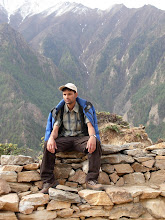The number of tourists enjoying trekking along the Annapurna circuit has soared by 25 percent this season, according to Annapurna Conservation Area Project (ACAP).
With the rise in the number of visitors, the hotels in Myagdi and Mustang regions are operating full house, generating better income to local entrepreneurs.
Delighted over better earnings from foreign visitors, local hoteliers, meanwhile, has started denying services to domestic travelers. “It is very sad for us, but we have no option. We have no space to accommodate visitors for night stay,” Chhonam Dorje of Laligurans Hotel said.
According to ACAP, about 25,740 tourists visited the region as of October-end this season, whereas the number of arrivals was 18,462 in the same period last year.
The number of visitors has continued to grow even in November, said Paras Bikram Singh, chief of ACAP in Mustang. He told myrepublica.com that the growth has mainly been recorded in the number of tourists from SAARC region. “More visitors from SAARC countries are visiting the region for adventure as well pilgrimage purpose,” he stated.
Trekking on the Annapurna circuit has been one of the major reasons behind the increment in number of trekkers in the region. Also the pilgrimage to Muktinath, a temple widely revered in Nepal and India, has also been contributing to the rise in number of tourists in the region.
The trekking along the circuit starts from Naya Pul of Kaski and traverses along Birethanti, Ghandruk, Ghorepani, Shikh, Gharkhola, Tatopani, Dana and reaches Pun Hill. It further moves ahead to Pahiro Thapla, Lete, Kowang, Tukuche, Marfa, Jomsom, Muktinath, Thorang Pass and moves into Manang.From Manang, trekkers travel through Khangsar to Pisang, Dharapani, Chamje in Lamjung and ends at Besi Shahar of Lamjung.
For the trek, each tourists needs to pay permit fee of Rs 2,000 to ACAP. Earlier, trekking through the circuit used to take 22 days, thereby creating substantial business opportunities to the locals. However, with the start of vehicular services, the number of trekking days in the route has dropped to 12 days.
Tourists from France, USA, UK, India and Korea mostly travel along this route. Apart from trekking, the region is also popular for its rich bio-diversity, and hence, has been attracting overseas researchers as well.



No comments:
Post a Comment